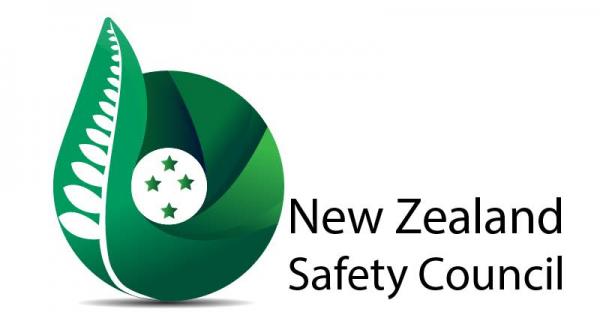Registration as a Safety Professional
The NZSC 10 core competencies that demonstrate proficiency as a Safety Professional
RSP applicants must pass 10 NZSC competencies, listed below. These are assessed by reviewing:
- Current competency, using portfolio document review, CV and experience.
- Relevant qualifications and courses or undertaking a course of study.
- Completing work related projects.
The Competencies are:
Competency One ~ Understanding the Legal Framework of New Zealand
The applicant is required to demonstrate an understanding of the legal and regulatory framework of OHS in New Zealand. They will demonstrate provision of advice regarding the OHS legislats:ive responsibilities of an OHS practitioner (duty holders PCBU’s and officers), company director, manager, supervisor and employees.
Competency Two ~ Emergency Planning and Response
Demonstrates and describes the performance outcomes, skills and knowledge required to Plan for Emergencies and implement emergency response procedures.
Competency Three ~ Demonstrate a systematic approach to managing Occupational Health & Safety [OHS] in the workplace.
Competencies include: (a) understanding the strategies, policies and procedures necessary to systematically manage all facets of an OHS Program and (b) measuring and evaluating all aspects of organisational performance, to ensure that the workplace is, as far as practicable, safe and healthy, with the risk exposures to employees and other stakeholders managed As Low As Reasonably Practicable (ALARP), but enabled to SFAIRP – So Far As is Reasonably Practicable.
Competency Four ~ Demonstrate management of OHS information and data systems
Has demonstrated the provision of necessary information and performance data (including technical and legal information) to management and other stakeholders informing of OHS issues.
Applicants must also show ability to measure and evaluate the effectiveness of OHS Systems by accessing and providing OHS information, collecting, collating and analysing data and ensuring that this information and data is distributed throughout the workplace in timely and regular intervals.
Competency Five ~ Demonstrate participation in the design and development of OHS participative arrangements.
Show involvement in the consultative design, development, implementation, monitoring and review of practices, and decision making with employees and others in OHS activities. This unit standard also takes into account the responsibilities for managing OHS, as well as participative consultation and communication processes within an organisation or business unit.
Competency Six ~ Demonstrate the application of the principles of OHS Risk Management
The applicant must demonstrate a generic approach to both identifying hazards and assessing and controlling OHS risks and then how to manage them in the workplace. This requirement addresses the underlying knowledge and skills required to provide a systematic approach to hazard identification, risk assessment, risk and barrier control and their subsequent management and monitoring.
The emphasis is on identifying significant and critical H&S risks and on eliminating risk or, where this is not possible, minimising and mitigating risk through other appropriate means.
Once significant or critical risk barriers are identified and implemented, the applicant must demonstrate they have scheduled and carried out barrier control audits, review and monitoring. Thereafter they must demonstrate the ongoing generic management and monitoring of hazards and risks both within the business (people) and generically through systems and processes.
Competency Seven ~ Demonstrate the identification and management of hazards in the work environment through the assessment and control of risks.
This includes knowledge of energy and disease sources* and focuses on the processes and techniques necessary to control specific hazards. Hazards may involve the potential of uncontrolled energies including: *gravity (falls from heights, kinetic, electrical (includes stored energy and light energy as electromagnetic radiation) mechanical, chemical (hazardous substances and dangerous goods), dusts and fibres, thermal environment, pressure, acoustics, (noise and vibration), radiation (natural environmental and industrial radioactive sources), biomechanical hazards (e.g. manual handling ~ pushing, pulling, carrying and lifting). Includes disease scenarios, microbiological (fungi, viruses, bacteria) or psychosocial hazards and/or hazards arising from general work environment and other processes.
Competency Eight ~ Demonstrate the Management of Hazards associated with plant, machinery and equipment.
Identify specific requirements required to meet OHS legal compliance in relation to workplace plant and equipment. These obligations are based on the Australian Standard for Safety of machinery, AS 4024 1-2006, which is the foundation for compliance with occupational safety and health legislation. Note: other standards also apply e.g. various electrical and mechanical standards. See also: http://www.business.govt.nz/worksafe/tools-resources/ for further guidance on machine safety.
Competency Nine ~ Demonstrate the ability to apply the prevention principles of Occupational Health** to control OHS Risks.
Test applicant’s ability to apply OHS principles to control occupational health risk(s) in the workplace. OHS practitioners are required to work with occupational health professionals who seek to identify chemicals and other substances that have the potential for interference with the body's normal energy exchange, metabolism or physiology.
Note: ** Occupational Health is devoted to the anticipation, recognition, evaluation and control of those factors or stresses, arising in or from the workplace processes, which may cause sickness, impaired health and wellbeing, or significant discomfort and inefficiency.
Competency Ten ~ Demonstrate participation in the investigation of incidents and accidents
Has demonstrated the ability to lead teams conducting investigations into the reporting of incidents/accidents, that has resulted in, or had the potential to result in, injury to people, damage to property, plant, equipment or the environment.
Understands the principle and methodology of Root Cause analysis investigation, including Systems Failure and Human Factor analysis. Demonstrates effective incident investigation through recognised tools eg. Fault Tree Analysis or other systems such as Tripod, SCAT, Triadic Flawed Analysis or ICAM’s.
NOTE:
- To list on the HASANZ Register there are some additional requirements, such as holding professional indemnity insurance
- NZSC defines competence as: "The ability to complete a task to the required standard of performance under specific conditions. It involves the effective and efficient application of knowledge, skills, experience and attributes, and it must be measurable"
